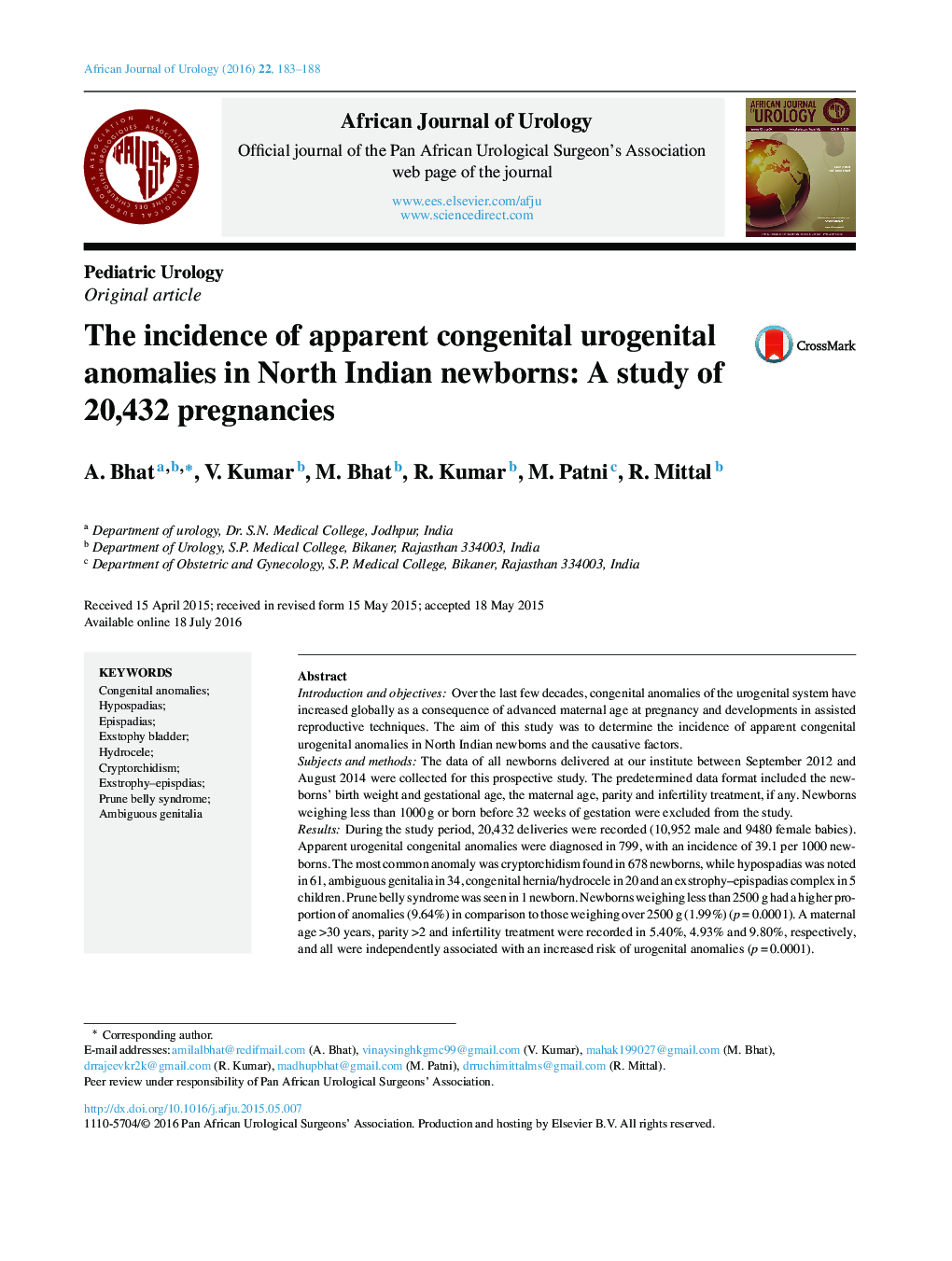| Article ID | Journal | Published Year | Pages | File Type |
|---|---|---|---|---|
| 4267495 | African Journal of Urology | 2016 | 6 Pages |
Introduction and objectivesOver the last few decades, congenital anomalies of the urogenital system have increased globally as a consequence of advanced maternal age at pregnancy and developments in assisted reproductive techniques. The aim of this study was to determine the incidence of apparent congenital urogenital anomalies in North Indian newborns and the causative factors.Subjects and methodsThe data of all newborns delivered at our institute between September 2012 and August 2014 were collected for this prospective study. The predetermined data format included the newborns’ birth weight and gestational age, the maternal age, parity and infertility treatment, if any. Newborns weighing less than 1000 g or born before 32 weeks of gestation were excluded from the study.ResultsDuring the study period, 20,432 deliveries were recorded (10,952 male and 9480 female babies). Apparent urogenital congenital anomalies were diagnosed in 799, with an incidence of 39.1 per 1000 newborns. The most common anomaly was cryptorchidism found in 678 newborns, while hypospadias was noted in 61, ambiguous genitalia in 34, congenital hernia/hydrocele in 20 and an exstrophy–epispadias complex in 5 children. Prune belly syndrome was seen in 1 newborn. Newborns weighing less than 2500 g had a higher proportion of anomalies (9.64%) in comparison to those weighing over 2500 g (1.99%) (p = 0.0001). A maternal age >30 years, parity >2 and infertility treatment were recorded in 5.40%, 4.93% and 9.80%, respectively, and all were independently associated with an increased risk of urogenital anomalies (p = 0.0001).ConclusionsThe incidence of apparent congenital urogenital anomalies was 3.91%. Infertility treatment, parity >2 and a maternal age >30 years were independently associated with an increased risk of congenital urogenital anomalies.
